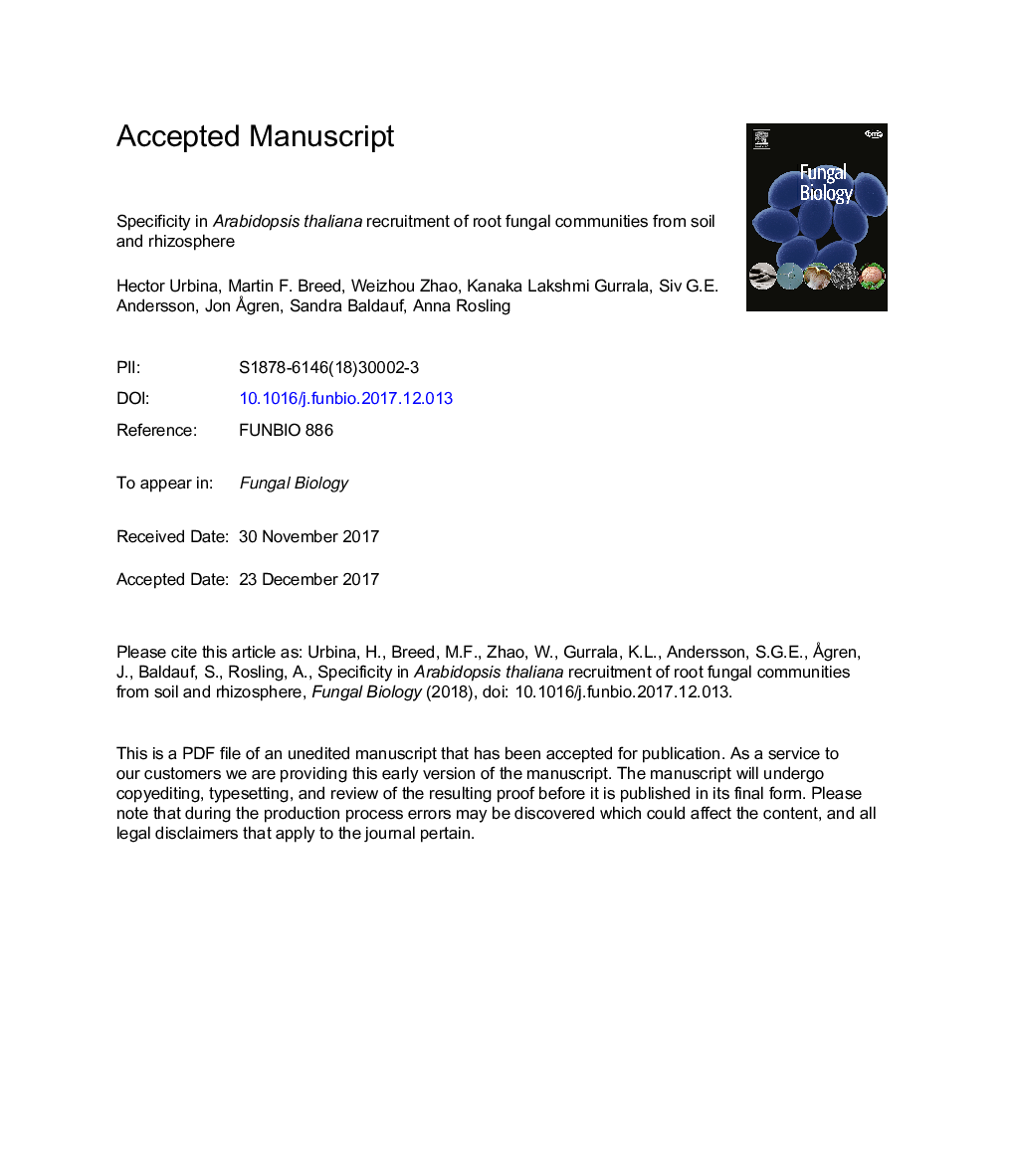| Article ID | Journal | Published Year | Pages | File Type |
|---|---|---|---|---|
| 8842775 | Fungal Biology | 2018 | 38 Pages |
Abstract
Biotic and abiotic conditions in soil pose major constraints on growth and reproductive success of plants. Fungi are important agents in plant soil interactions but the belowground mycobiota associated with plants remains poorly understood. We grew one genotype each from Sweden and Italy of the widely-studied plant model Arabidopsis thaliana. Plants were grown under controlled conditions in organic topsoil local to the Swedish genotype, and harvested after ten weeks. Total DNA was extracted from three belowground compartments: endosphere (sonicated roots), rhizosphere and bulk soil, and fungal communities were characterized from each by amplification and sequencing of the fungal barcode region ITS2. Fungal species diversity was found to decrease from bulk soil to rhizosphere to endosphere. A significant effect of plant genotype on fungal community composition was detected only in the endosphere compartment. Despite A. thaliana being a non-mycorrhizal plant, it hosts a number of known mycorrhiza fungi in its endosphere compartment, which is also colonized by endophytic, pathogenic and saprotrophic fungi. Species in the Archaeorhizomycetes were most abundant in rhizosphere samples suggesting an adaptation to environments with high nutrient turnover for some of these species. We conclude that A. thaliana endosphere fungal communities represent a selected subset of fungi recruited from soil and that plant genotype has small but significant quantitative and qualitative effects on these communities.
Related Topics
Life Sciences
Agricultural and Biological Sciences
Agricultural and Biological Sciences (General)
Authors
Hector Urbina, Martin F. Breed, Weizhou Zhao, Kanaka Lakshmi Gurrala, Siv G.E. Andersson, Jon Ã
gren, Sandra Baldauf, Anna Rosling,
